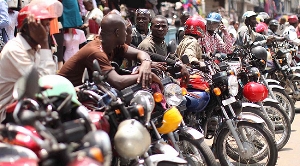The 1994 Rwandan genocide that left nearly a million people dead, is one of the events that Tanzania’s former President Ali Hassan Mwinyi will never forget.
The retired leader, 96, popularly known as Mzee Rukhsa, made efforts to find a lasting solution between the warring factions, but the situation continued to worsen when the Rwandan and Burundian presidents were assassinated few hours after attending a reconciliation session in Arusha.
In his memoir: ‘Mzee Rukhsa: Safari ya Maisha Yangu’, Kiswahili for ‘Mzee Rukhsa: The Journey of My Life’, he says he will never forget Wednesday April 6, 1994, a day on which he led the meeting of regional leaders to discuss peace and security amid tensions in Burundi and Rwanda.
“The meeting was a continuation of our efforts to reconcile Rwandans, especially the government led by President Juvenal Habyarimana on the one hand and the Rwandan Patriotic Front (RPF) on the other,” he said.
The memoir states that among the leaders who attended the meeting were President Habyarimana of Rwanda and President Cyprien Ntaryamira of Burundi who each flew to Arusha with Habyarimana offering a lift to Tanzania’s ambassador to Rwanda Saleh Tambwe.
On their way back home after the meeting, Mwinyi writes, President Habyarimana, whose flight was of high-speed decided to offer a lift to the President of Burundi, Ntaryamira, whose plane was slow, in a situation that they could not accommodate Ambassador Tambwe back to Kigali.
“This was the luckiest day for our ambassador to Rwanda, as the plane carrying the two presidents was shot down and exploded when it was about to land at Kigali airport. Everyone on board died,” Mzee Rukhsa writes.
Mwinyi says, at the meeting aimed at resolving the issue, President Habyarimana assured them that he would go to implement the Arusha agreement, including the swearing-in of the transitional government, but little did he know that his days were drawing to a close.
“The deaths of these presidents shocked me personally, as well as the entire government and Tanzanians. We were traumatized, saddened and deeply distressed. I announced three days of national mourning for the presidents and sent condolences to the families of the deceased as well as the governments and the peoples of those two countries,” explains Mwinyi.
He says deaths occur, including accidental or intentional deaths, but it is uncommon to hear of two presidents, neighbours, dying together and for Tanzania, it was the first time for guests at the presidential level, friends and neighbours to die after leaving Tanzania.
“The saddest thing is that both presidents were in our country looking for a solution to end the killings that were going on in their countries and bring peace, harmony, and cooperation among all citizens…,” he explains.
He goes on to say that although induced genocide had begun slowly in the past, the death of President Habyarimana was a source of the genocide in Rwanda.
“In a blink of an eye, a wave of refugees from Rwanda to Tanzania, some with serious injuries started. I went to Ngara where I witnessed hundreds of bodies floating in River Kagera, some with shocking injuries caused by swords, spears,” recalls Mzee Mwinyi.
Also, he narrates witnessing the bodies of wives and husbands married to Tutsis and Hutu who were seen as traitors and killed by being stabbed with a spear together.
“It was dreadful. At the Rusumo Bridge on the Tanzania-Rwanda border, I witnessed an estimated 10,000 refugees crossing the border into Tanzania every one hour. The United Nations acknowledged that this was the largest and fastest growing number of refugees from one country to another in Africa,” reads the memoir.
According to the UN figures, he says, on April 28, 1994 alone, 280,000 refugees entered Tanzania from Rwanda where most of them reached Ngara District which had a population of about 170,000, meaning, for every single citizen there were two refugees.
All the visitors, according to Mwinyi, needed food, water, shelter, toilets and so on. However, he says, suddenly the forest area turned into a desert because the refugees fell all the trees to get temporary housing materials, people’s farms were invaded, and they were harvested by starving refugees.
“I do not blame the refugees in such an environment, but the loss to the nation and our people was so huge,” he says.
He reveals that by May 1994, the Beneko Refugee Camp in Ngara had broken the record of being the largest refugee camp in the world and a daunting task for a poor country like Tanzania at the time.
“I’m not sure if a rich country would have suddenly accepted the burden of that level of refugees. But in Tanzania, especially in the time of Mwalimu Nyerere, we built a reputation for hospitality for refugees, and it is in fact our habit to be hospitable to foreigners,” notes Mzee Mwinyi.
President Habyarimana and President Ntaryamira were both Hutu, he says, their deaths were celebrated by a group of about 70 Rwandans and Burundians at the New Mwanza Hotel, they were celebrating the deaths, again at a time when the nation was still in national mourning.
In this regard, then Prime Minister John Malecela ordered their arrest, but they were later released after the Attorney General said there was no law prohibiting people from celebrating the death of another.
The act gave people the impression that Tanzania was involved in the civil war in Rwanda, explains Mwinyi. “The truth is that my government was neutral and we tried to remain silent not because we supported the killing of Tutsis and Hutu who were seen as traitors, but because I was the mediator of their disputes.”
He notes that some of the statements made by individuals, not on behalf of the government, and the government’s silence angered the Father of the Nation, Mwalimu Nyerere, who apparently believed the government had a side.
“On Tuesday, July 1, 1994, Mwalimu Nyerere convened a press conference and strongly condemned us in government that we were undermining Tanzania’s reputation as a defender of freedom and human rights. He said the Rwandan genocide was planned and carried out deliberately and that there was documentary evidence and he wanted us to strongly stand against the genocide,” he disclo
Mwinyi says the statement from Mwalimu Nyerere hurt him a lot because he personally was not and would never defend killers and that was why when the killings worsened he went to Rusumo Bridge and witnessed hundreds of floating corpses.
“If you have seen with your own eyes the consequences of such atrocities, how will you dare to defend the perpetrators of such killings? I could not do that…,” he writes.
Mwinyi says, “He must tell the truth.” To him, who was deeply troubled by the Rwandan mediation as well as witnessing the effects of the genocide, was deeply hurt by the level of accusations levelled against him by some of his fellow countrymen.
“After the Father of the Nation criticized our government on the issue of Rwanda and the explanation we gave, I thought this was over, but it was not. I finally had to convene a meeting with the elders of Dar es Salaam on August 4, 1994 to try again to put this matter right, alongside other issues,” he explains.
At the meeting, he says, he had to strictly remind people that the relations between Tanzania and Rwanda did not start with the second phase government, but existed before, during and after the late Habyarimana seized power in 1973.
Africa News of Monday, 17 May 2021
Source: thecitizen.co.tz













